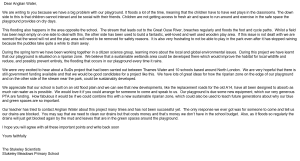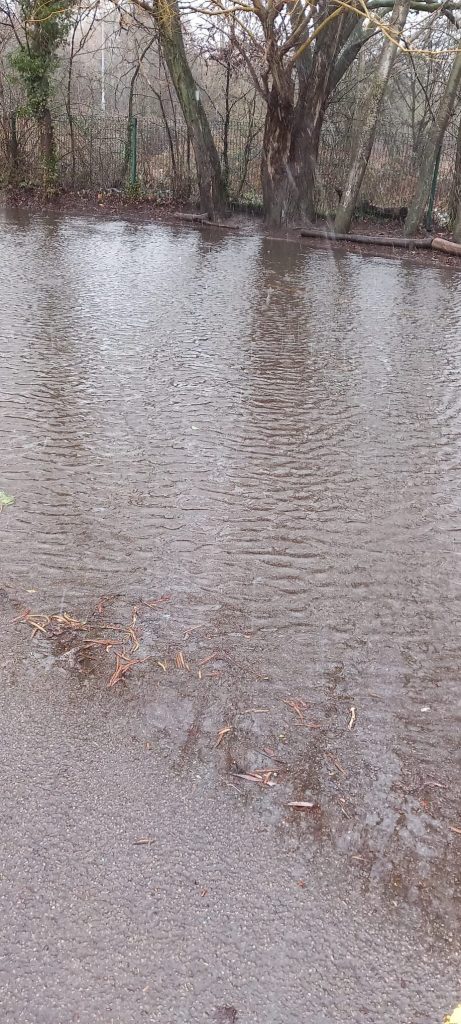Climate Detectives Projects 2022-2023
Project title: Flooding in Cambridgeshire
Team: Stukeley Scientists
Stukeley Meadows Primary School Huntingdon United Kingdom 31 Student’s age: 8-9 years old, 10-11 years old
Is the flooding we experience in Cambridgeshire evidence of climate change and can we do anything to improve the situation?

Our playground floods regularly every time it rains heavily. The local area has experienced lots of flooding and it stops us from playing, not only when it rains but while we wait for the water to subside. We cannot safely splash in puddles as the drain water is mixed in with the rain water making it unsafe. We set up a weather station on our school field but as we could not keep it out of reach of small children or animals, it was not very reliable. So we abandoned this data.
We thought that perhaps climate change was causing higher levels of rainfall and that was why our playground was flooding. We wanted to learn more about climate change so we carried out an investigation to see what the difference was between sea ice melting and ice melting on the land. We also worked together to test whether the temperature will rise if the ice melts by mimicking the effects of the sun on snow and ice using a white lined shoe box and the effects of sun on land and water using a black lined shoe box. We learnt about riparian zones and looked at the stream that runs alongside our playground. We all knew that trees and shrubs would absorb water and so we all agreed that planting more would help with the flooding and also improve the habitat for local wildlife. We thought that the tarmac on the playground was also causing problems and considered creating a wetland in the area that flooded most regularly. We could then use this wetland area to improve our science and forest school curriculum.

We worked together to input the data from a weather station in nearby Cambourne into a spreadsheet so that we could produce this graph. We realised that although annual rainfall had not significantly increased, there were now more months with very little rainfall and some months with very high rainfall. We agreed that this would make flooding more likely. We used local historic data from the Met Office to find out if more rainfall was causing increased flooding in the local area. We looked at the most recent data.
We concluded that it was not only the increased dry and then wet spells. We thought about how many more houses, shops, roads and paths had been built on fields in the town and thought this might also be part of the problem. A satellite image of the town shows how much of the land is covered with hard surfaces, leaving nowhere for the rain to drain away. This makes planting and wetlands even more important as a solution to the problem of local flooding. They have the advantage of being good for local wildlife too.
We realised that we needed to make some changes to our playground to stop the flooding, sadly we do not have the money in our school budget to make that change so we have contacted the local water company. We also knew we needed to make some changes to our lifestyles to help prevent climate change as this will increase flooding having catastrophic results in some parts of the world. We all identified areas where we could make a change and decided a course of action to spread the word to our community so these small changes could have a bigger impact.

We have written to the local water company, Anglian Water. We have tried contacting them on numerous occasions without success and so this time we also emailed our local MP, who has offered to follow our email and letter up. We are still awaiting a response.
We have also shared what we have learned with the rest of the year 5 and 6 children and their families in an assembly. We explained our findings and our aims. We also told them what changes we were going to make to lessen the impact of climate change. We asked them to help us by making those same efforts; reducing their plastic consumption, reducing their energy usage and walking, cycling or using public transport, rather than driving.
Year 5 and 6 are now passing the environmental science torch onto the year 4s. Inspired by our work they will be starting a project on caring for our blue space, thinking about how our streams and rivers impact the seas and oceans. We intend to become citizen science champions and inspire the next generations, and our parents and teachers, to take better care of our world.
Projects are created by the teams and they take the full responsibility of the shared data.
← All projects





